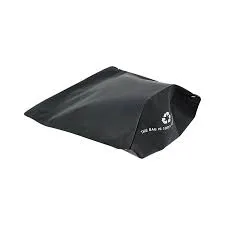- Afrikaans
- Albanian
- Amharic
- Arabic
- Armenian
- Azerbaijani
- Basque
- Belarusian
- Bengali
- Bosnian
- Bulgarian
- Catalan
- Cebuano
- chinese_simplified
- chinese_traditional
- Corsican
- Croatian
- Czech
- Danish
- Dutch
- English
- Esperanto
- Estonian
- Finnish
- French
- Frisian
- Galician
- Georgian
- German
- Greek
- Gujarati
- haitian_creole
- hausa
- hawaiian
- Hebrew
- Hindi
- Miao
- Hungarian
- Icelandic
- igbo
- Indonesian
- irish
- Italian
- Japanese
- Javanese
- Kannada
- kazakh
- Khmer
- Rwandese
- Korean
- Kurdish
- Kyrgyz
- Lao
- Latin
- Latvian
- Lithuanian
- Luxembourgish
- Macedonian
- Malgashi
- Malay
- Malayalam
- Maltese
- Maori
- Marathi
- Mongolian
- Myanmar
- Nepali
- Norwegian
- Norwegian
- Occitan
- Pashto
- Persian
- Polish
- Portuguese
- Punjabi
- Romanian
- Russian
- Samoan
- scottish-gaelic
- Serbian
- Sesotho
- Shona
- Sindhi
- Sinhala
- Slovak
- Slovenian
- Somali
- Spanish
- Sundanese
- Swahili
- Swedish
- Tagalog
- Tajik
- Tamil
- Tatar
- Telugu
- Thai
- Turkish
- Turkmen
- Ukrainian
- Urdu
- Uighur
- Uzbek
- Vietnamese
- Welsh
- Bantu
- Yiddish
- Yoruba
- Zulu
Tips for Effectively Cutting Polyethylene Foam for Your Projects
How to Cut Polyethylene Foam A Comprehensive Guide
Polyethylene foam is a versatile material widely used in packaging, cushioning, and insulation due to its lightweight and shock-absorbing properties. However, cutting this foam can sometimes be challenging if you aren't familiar with the best methods and tools to use. This guide will provide you with valuable tips and techniques for cutting polyethylene foam effectively, ensuring clean edges and a satisfying finish for your projects.
Understanding Polyethylene Foam
Polyethylene foam is made from closed-cell polyethylene, resulting in a durable and resilient product. It is available in various densities and thicknesses, making it suitable for a range of applications, from protective packaging to acoustic insulation. The foam's durability is coupled with its flexibility, allowing it to be easily manipulated. However, due to its structure, special care must be taken when cutting to avoid tearing or fraying.
Tools You Will Need
Before you start your cutting project, gather the necessary tools. Depending on the thickness and type of polyethylene foam you are working with, you may need one or more of the following
1. Utility Knife A sharp, retractable utility knife is ideal for cutting thinner sheets of polyethylene foam. This tool provides good control and allows for precise cuts.
2. Hot Wire Foam Cutter For thicker foam (usually over 1 inch), a hot wire foam cutter is recommended. This tool uses a heated wire to melt through the foam, creating clean edges and minimal debris.
3. Electric Knife An electric carving knife can also be effective for medium to thick foam. The serrated blades help to slice through the foam without compressing it excessively.
4. Ruler and Marker To ensure straight cuts, use a ruler and a marker to measure and mark your cutting line.
how to cut polyethylene foam

Step-by-Step Cutting Method
1. Measure and Mark Start by measuring the area that needs to be cut. Use the ruler to mark the desired dimensions on the foam with a marker. Ensure that your lines are straight and clear for accuracy.
2. Secure the Foam If possible, secure the foam in place to prevent it from moving while you cut. You can use weights or double-sided tape for this purpose.
3. Choose Your Cutting Tool Select the tool that is most appropriate for the thickness of your foam. For thinner foam, a utility knife will suffice. For thicker foam, opt for a hot wire or electric knife.
4. Cutting Technique - Utility Knife Hold the knife at a consistent angle and apply gentle pressure as you cut along the marked line. It’s best to make multiple passes with light pressure rather than trying to cut through in one go. - Hot Wire Cutter Turn on the cutter and allow it to heat up. Then, slowly guide the heated wire along the marked line, allowing it to melt through the foam. Move steadily to avoid burning the foam. - Electric Knife Position the blade along the marked line and turn on the knife. Gently move it back and forth to slice through the foam, keeping a steady hand to follow the line.
5. Finishing Touches Once you have cut the foam, inspect the edges. If there are any rough spots, you can trim them down with scissors or a utility knife to achieve a clean finish.
6. Cleaning Up After cutting, clean the work area to remove any foam debris. This will help keep your workspace organized and make it easier to handle the foam pieces.
Conclusion
Cutting polyethylene foam can be a straightforward process when you have the right tools and techniques. By following the steps outlined in this guide, you can achieve precise cuts tailored to your specific needs. Whether you are working on a DIY project or preparing materials for packaging, taking the time to cut the foam correctly will ensure impressive results and enhance the effectiveness of your applications. With practice, you'll become adept at handling polyethylene foam, allowing you to tackle a wide range of projects with confidence.













